Social media marketing can be a powerful tool for expanding your reach and engaging with audiences in real time. To help with your efforts, the College of Engineering’s Marketing and Communications team has created this guide.

Social media at the UW College of Engineering (CoE)
The College has a presence on LinkedIn, Facebook, Twitter/X and Instagram, and posts an estimated four times a week.
Goals for social media:
- Expand the College’s reputation and influence by highlighting impactful research and education in our community and around the world.
- Cultivate a diverse and inclusive community by highlighting relevant student achievements, events and initiatives.
- Increase audience engagement by connecting with them on platforms where they are most active.
Content development for social media
This non-comprehensive set of general rules will help content perform optimally across our channels.
Aligning your voice
Every social media account should have its own voice, while at the same time, align with the brand standards and tone of the University of Washington and the College. This guide includes general style rules, optimizations, considerations and example posts to ensure that your content meets brand standards and optimizes engagement.
Because social media is constantly evolving, we plan to update this guide bi-annually with new insights and process adjustments.
Note: This guide focuses on the creation and optimization of content specifically for departments in the College of Engineering. For more information on branding and overall writing style, please refer to the UW Brand Guidelines, the UW Style Guidelines and the CoE Supplemental Style Guidelines.
Social media platform demographics
When drafting content, the first thing to consider is the platform itself. Each has its own distinct audiences and demographics, so it’s critical that the platform you’re using connects to the audience you’re trying to reach. The demographics for our main four platforms are:
Tailoring content for the platform
Some types of content clearly resonate with one platform over another, for example, student events on Instagram and not LinkedIn; a new faculty position would be the opposite. But often, content is applicable across audiences. Here are a few ways to tailor content to the platform:
- Adjust a few key words. Instead of rewriting the entire post, you can make an impact by adjusting a few words, often in your call-to-action (CTA).
- On LinkedIn: “Come support the future of engineering!” - on Instagram: “Come and support your fellow Husky engineers!”
- Consider (carefully) using AI. Although you should exercise caution when using generative AI (look at our guidelines for how to use it), it can offer suggestions on how to reword sentences or identify engaging language. Always review and edit the response before posting.
- Consider prompts such as: “This is the introductory sentence for a social media post for donors on LinkedIn. Without altering the meaning, what are 5 different ways I could make this intro more appealing to an audience of undergraduates?”
- Pretend you’re writing to a specific person. This marketing trick can be useful when writing for social media. Consider who you want your content to resonate with and write your post specifically for them.
- How would you write a note to an undergraduate student about a piece of research? How about a faculty member?
Drafting post text
Before writing a post or creating graphics, a social media marketer must first decide:
What is the post trying to accomplish?
- Are you trying to get people to visit a webpage?
- Read a research story?
- Donate to a fundraiser?
- Share a meme about a professor?
All of these goals can be accomplished through social media, but may look dramatically different. Keeping the specific goal in mind is critical before setting out to design a post.
Once you’ve decided on the post’s goal, the second priority is to get users to stop scrolling, and pause to read your content. This is why it’s critical to ask yourself:
What is it about this specific content that resonates with this specific audience?
Examples

For a LinkedIn post highlighting a student organization to a professional audience, we opened with antithesis (juxtaposing the club's
size with its impact) and a clear statement about the interesting problem the club is trying to solve.

In this intro, for a general Twitter audience, we open with a fun fact that most of our audience is likely unaware of.
The introduction doesn’t need to be complicated. What might make you stop and read if you were a student, young professional, avid news reader, etc.?
The rest of your post should keep the reader engaged while summarizing your message succinctly and with plain language. You don’t want your audience to have to work too hard.
For text-heavy posts on LinkedIn and Facebook, we have found success by following a general structure - typically a concise paragraph expounding on the intro and an interesting quote from the article.
Example
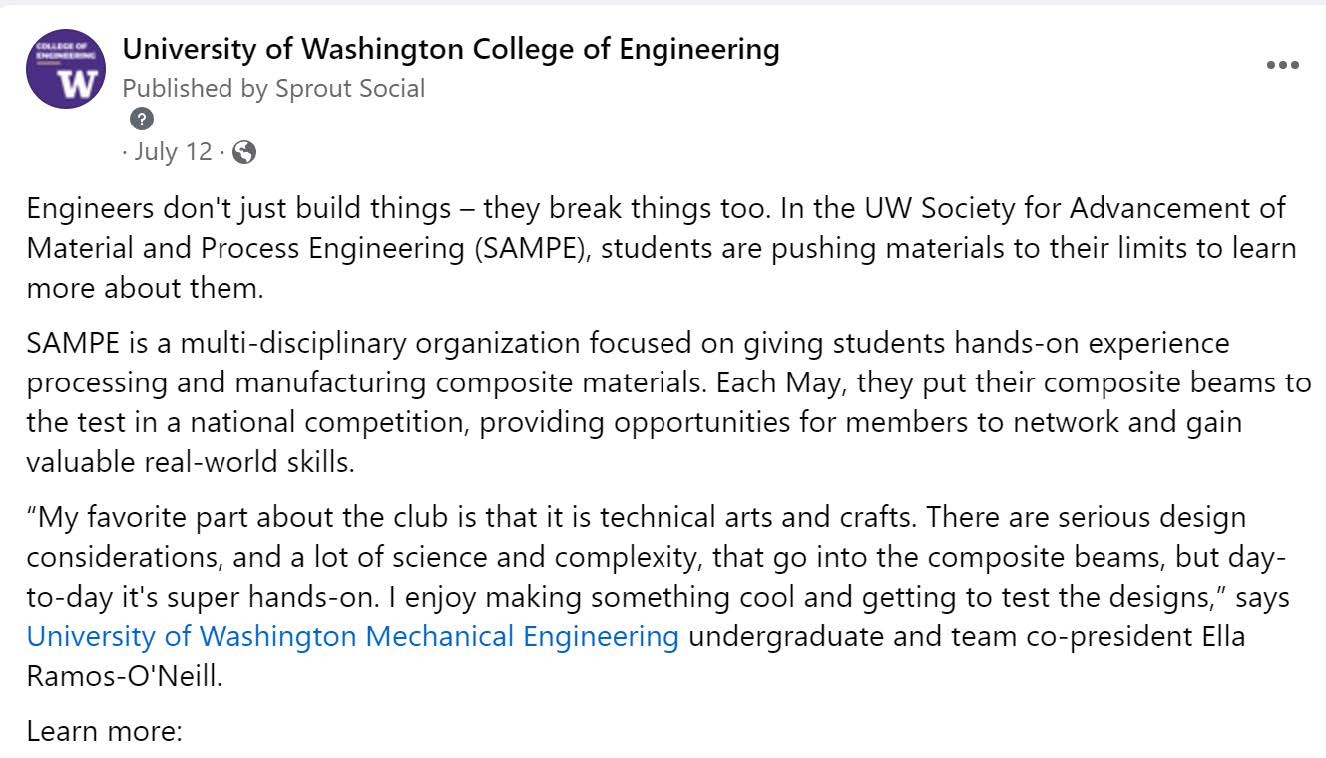
Here, we have our intro statement, a single paragraph detailing the work as concisely as possible, and a quote from the team’s co-president.
If your goal is to get people to act, such as click, register or sign-up, your call-to-action (CTA) needs to be:
- Direct and unambiguous (“register here” vs “click here”)
- Concise (“subscribe for important updates” vs “click here to get critical news and events in your inbox” )
- Have a clear value proposition (“show your support for student groups” vs “donate here”)
Example

This CTA is concise and specific and offers a clear value proposition (their support makes a difference)
Best practice post considerations
A great social media post is inclusive, accessible, and mindful of your audience. Consider these factors when drafting posts:
Tools like Grammarly can play the role of editor, helping to remove unnecessary filler words. You may not realize how often unnecessary words (like “actually” and “really”) and excess verbs (i.e. “the team aims to help find a cure” vs “the team is helping find a cure”) can find their way into a post.
Although we’re often highlighting cutting-edge research, we should strive for readability. Programs like WebFX Readability Calculator can help identify if your post has a low readability score and needs to be simplified for a wider audience.
While the Web Content Accessibility Guidelines (WCAG) don’t specify a readability score, if your readability score is too low, consider rewriting or adding additional context.
All UW communications should reflect our community, which is broad, diverse and complex. Please review the UW’s Equitable Language Guide to ensure your posts use inclusive and equitable language.
Most posts contain hyperlinks. Before clicking “post,” ensure that your link works and does not include any unnecessary UTM tracking data, which can cause redirect issues.
Example
https://wwww.engr.washington.edu?utm_campaign="campaign"&utm_medium...
UTM tracking data from an email. This should be removed before posting to social media.
When possible, shorten your links (and many social media platforms and programs automatically do this) to improve readability.
Alt text for images is an accessibility factor that is not only a best practice, but starting in 2026, will be required by the ADA. Every social media post image must include alt text.
Example
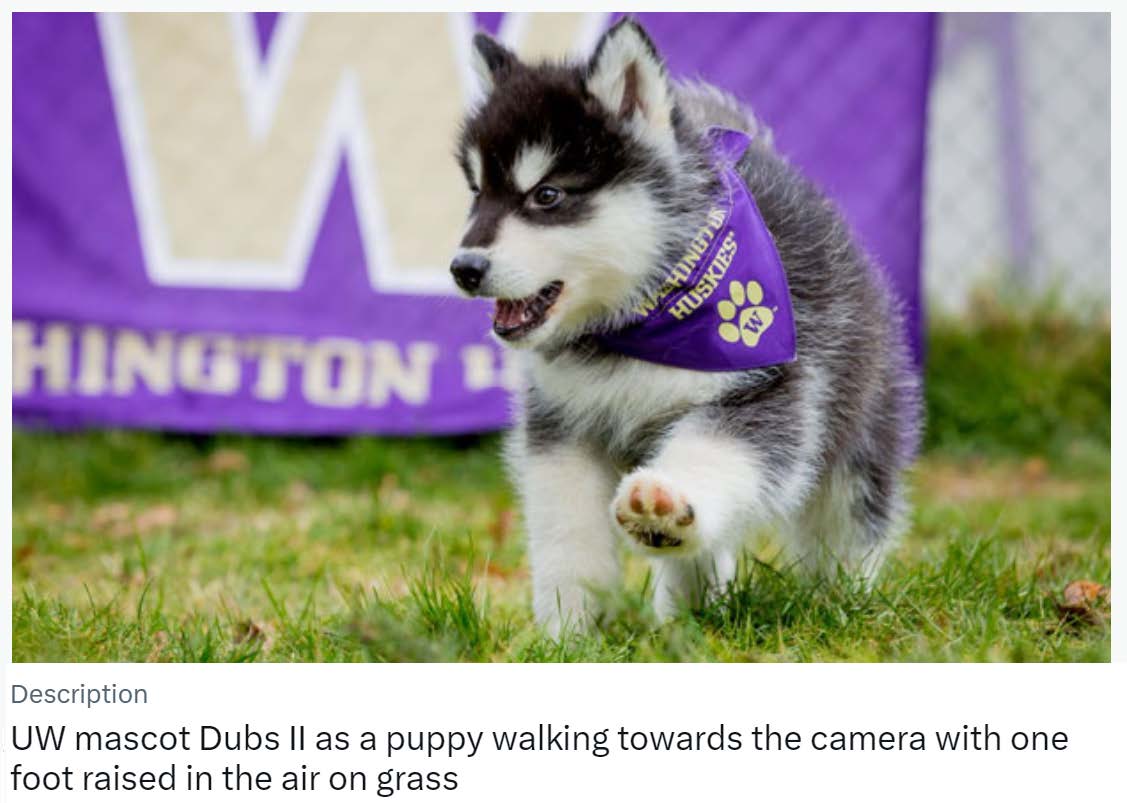
Alt text provides a brief and specific description of an image, which is used in place of the image if viewed by a screen reader or a page that can’t render HTML. It should describe the image in context so that people who are unable to see the image can understand what it is conveying. Harvard’s alt text guide offers helpful guidance.
Universities use a lot of acronyms. Unless the acronym is commonly abbreviated by most audiences (such as “ASAP” or “USB”), acronyms should always be written out the first time it appears, followed by the acronym in parentheses. Subsequent uses in the same post can be abbreviated.
Example
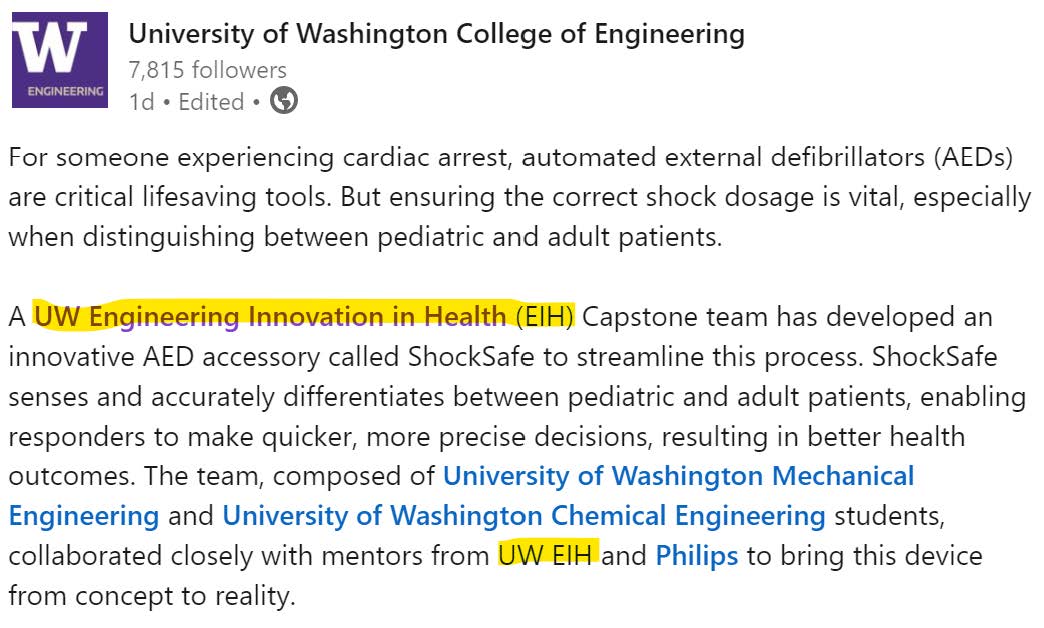
If you’re unsure how to properly spell out or abbreviate a department or program, our UW CoE Supplemental Style Guidelines has more information.
Social media posts with images perform exponentially better with impressions, engagements and reshares when compared to the same posts without.
Whenever possible, social media posts should include an applicable, appropriate and interesting image. If you include a link, most platforms will automatically include an image from the link. If not, look for an image that adds context and makes people want to click on the post.
Discoverability & engagement strategies

Tagging can boost visibility and help your post reach new audiences. When picking accounts to
tag, ask yourself:
Is this account relevant to my audience?
With countless accounts that you could tag, it’s important to focus on relevant accounts that
provide value or context to our audience.
Examples
- In a post about a civil engineering professor from Geekwire, consider tagging UW CEE, the professor and Geekwire magazine.
- For one on a new tech breakthrough with an iPhone app, it wouldn’t add value or context to tag Apple.
Am I tagging the correct account?
Verify your tag by clicking it before posting. You might mean to tag the National Science
Foundation (NSF), but may be accidentally tagging NASA Space Flight (NSF). Don’t ask how
we came up with this extremely specific example.
Am I tagging too many accounts?
Tagging has benefits, but too many can make your post difficult to read. Additionally, some
platforms such as LinkedIn may consider your post spam if you tag more than five accounts.
Hashtags can increase discoverability and engagement, and help measure feedback on an
event or story. You may not realize you should optimize the number of hashtags to match the
platform’s specific algorithm.
3-5 hashtags per post
1-2 hashtags per post
Twitter/X
1-3 hashtags per post
10-20 hashtags per post
Only use relevant hashtags to your post, and balance popular hashtags with ones that are
specific or niche.
Example: LinkedIn, three total: one UW theme (#UWInnovates), one popular
(#ArtificialIntelligence) and one specific (#Biomedical).
Always write hashtags in title case to avoid confusion (#aiintech vs #AIinTech).
Using emojis can increase engagement from 10% to 57% (according to research from
SproutSocial). When using emojis, follow three rules:
- Make sure the emojis are relevant! 🚀 makes sense on a post about aerospace. 🍎 on a post about an iOS app may not.
- Consider accessibility - ensure the post can be read if the emoji isn’t there, and use at the end of sentences, not the beginning, for screen readers.
- Ensure the emoji displays correctly on all platforms and makes sense for your message. Different social media platforms may display different emojis.
Example

In this Tweet, we use two emojis at the end of sentences. Both are relevant but aren’t necessary to understand the message.
You can’t post direct links in the text or image portion of an Instagram post (except in Stories which offer a clickable link sticker). It’s important to include information and context to help your audience get information they might typically get with a link.
There are two ways that we include links in Instagram posts:
A “link in bio” tool
Linktree is free and has a clean interface, in addition to other options. Typically, “Learn more at the link in our bio” image is included in the final slide.
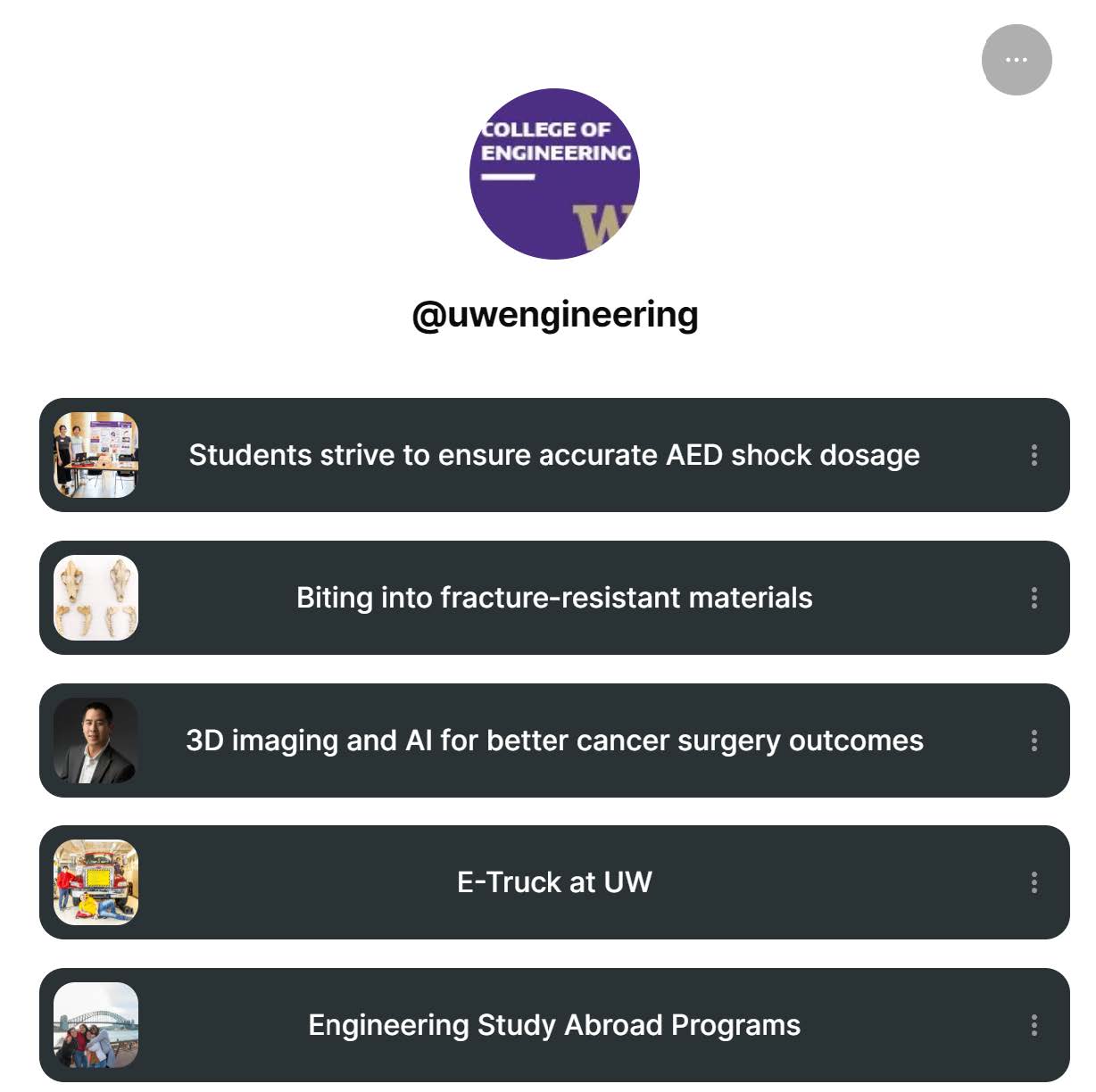
Linktree (pictured above) allows users to click on stories directly from our bio if they’re interested.
Adding a QR code
This should be as a supplement to using a “link in bio” option. A QR code provides a link for mobile users (who compose 98% of Instagram’s audience) but most mobile devices require screenshotting an Instagram post to use a QR code.

For some Instagram posts, we’ll include a QR as an additional way for people to register for an event.
Image selection
If you’re sharing a link, you probably already have an image for your social media post. Select an image that’s relevant to your content and visually interesting, not a placeholder or your department logo.
If you’re looking for alternatives, the UW Photo Collection, the College’s SmugMug account and the UW Library Special Collections are excellent resources. For stock photos, ensure you have permission through a royalty-free library, or through a paid account such as Adobe or Canva.
Always properly credit images, which are source dependent. For example, UW Library Special Collections has a specific crediting procedure for social media posts.
Creating and selecting post images
Because social media posts with images perform significantly better, you’ll need to adjust the size of your image to ensure it is displayed correctly.
- Instagram
- Square post (1080 x 1080px)
- Landscape post (1080 x 566px)
- Portrait post (1080 x 1350px)
- Story post (1080 x 1920px)
- LinkedIn
- Image post (1080 x 1080px)
- Twitter/X
- Image/gif post (1600 x 900px)
- Facebook
- Image post (1200 x 630px)
Image editors such as Canva and Adobe have automatic options to size images correctly for each platform.
Creating your own post image
We often use Canva and Adobe Photoshop to create graphics when just a photo isn’t enough. Canva is an easy-to-use tool with a library of templates, which you can personalize with UW branding elements.
CoE Canva templates
We’ve created templates proven to perform well on Instagram stories and posts. Click “use template in new design” to personalize a social media graphic.
Examples
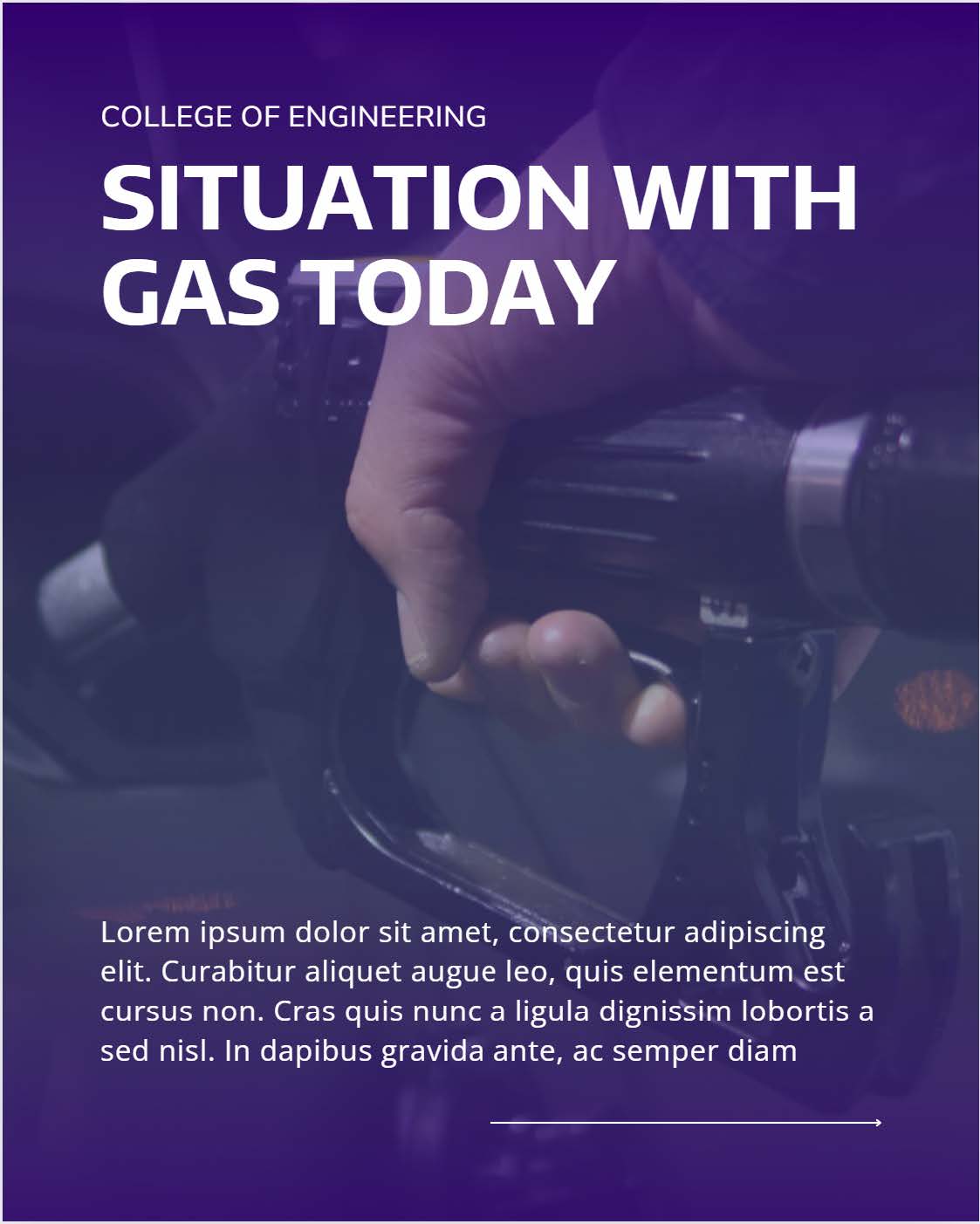

Our easily editable templates can be used or adjusted to quickly prepare news, awards and other content and have brand elements already incorporated.
Correct colors, font and branding
While there’s no stringent oversight over branded social media elements, it is still beneficial to use the appropriate colors, fonts and branding elements.
Example
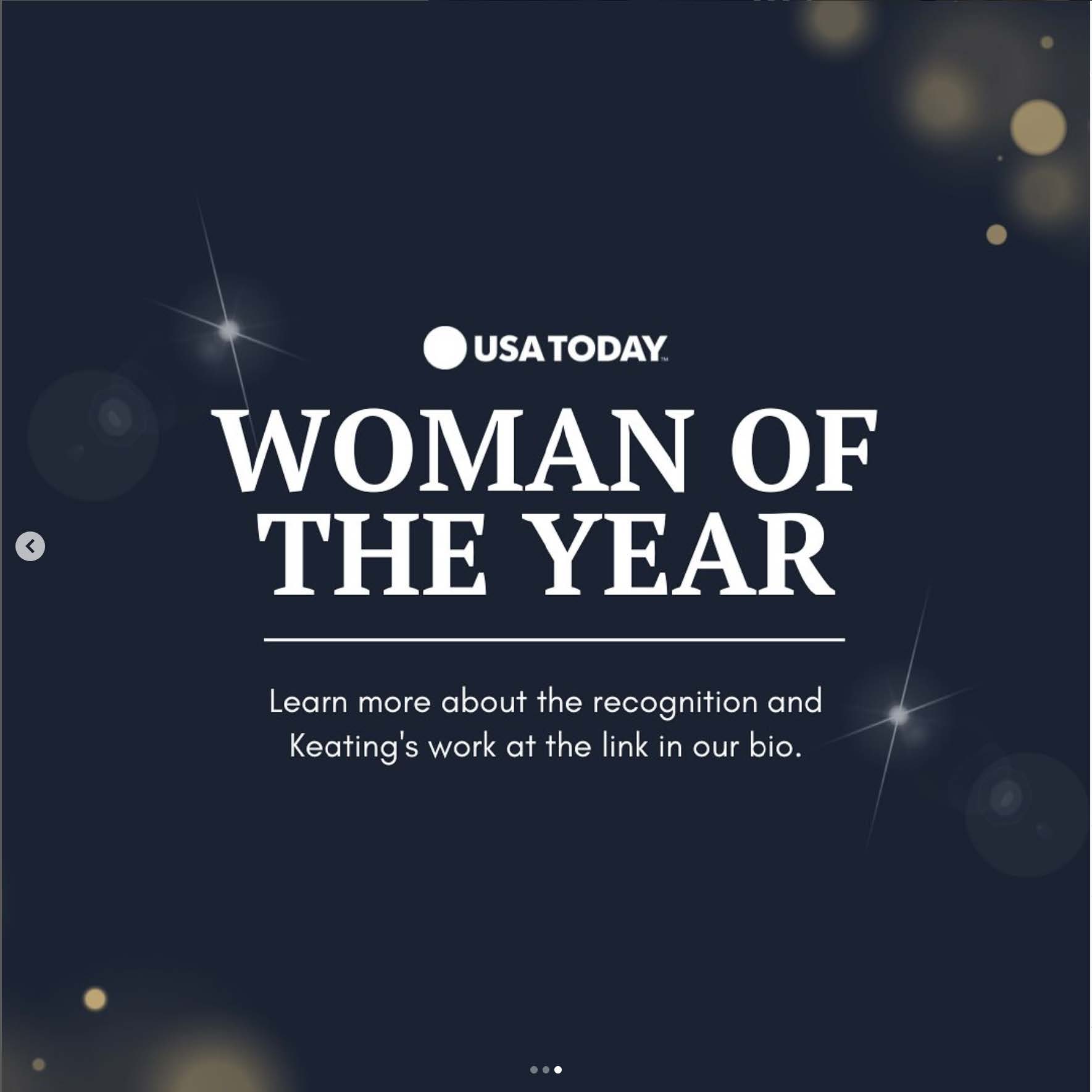
For some posts like the above, we’ll use off-brand colors if they suit the design. Use your best judgment when doing so.
Analyzing social media performance
Unlike more traditional forms of marketing, social media provides real-time feedback from your audience. You can boost your accounts’ engagement by analyzing the performance of your social media posts and testing different approaches.
Join the College of Engineering at our quarterly Social Media Metrics meetings to learn more about analyzing campaign and post performance. Email cbeason@uw.edu for an invite.
Additional resources
- The simple checklist helps ensure your social media posts meet UW standards.
- The COE Social Media Digest, is a quarterly newsletter with tips and data-driven insights to improve your social media performance. Email cbeason@uw.edu to be added to the list.
- Our Social Media Collaborator’s Guide helps us to work with departments to share stories, events and everything else.
- The Social Media Toolkit is where you’ll find all the new guides, resources, and templates as they are uploaded.
Questions?
We’ve only scratched the surface of what’s possible with social media. If you have specific questions or general feedback on this guide, please reach out via email.